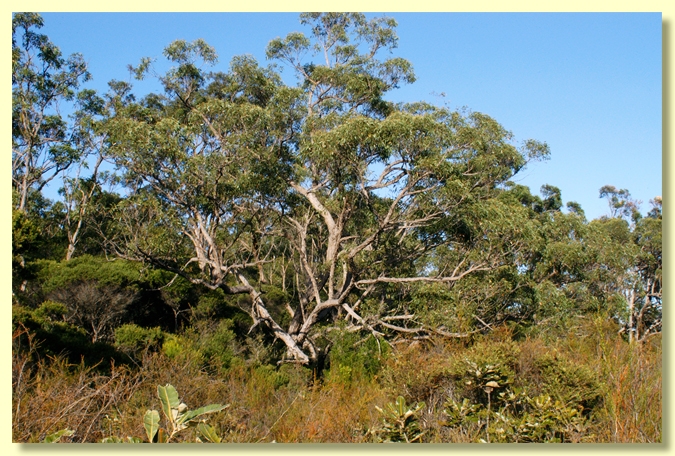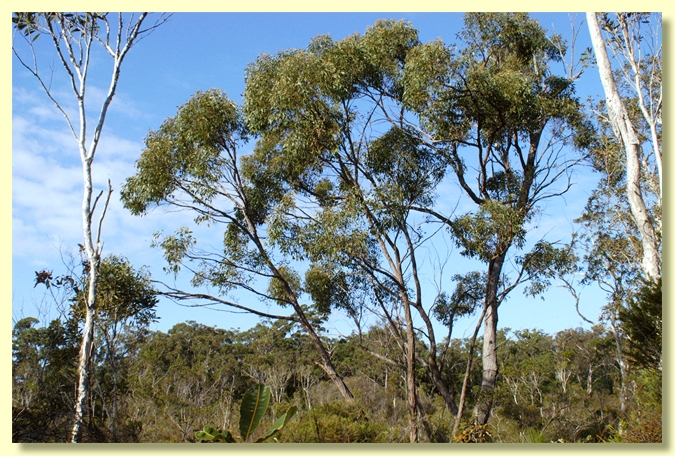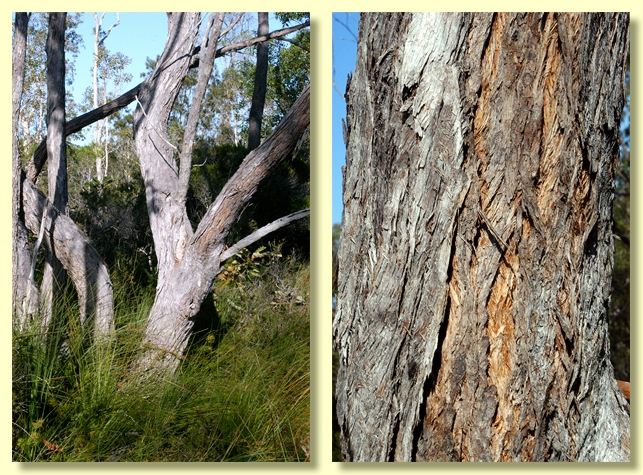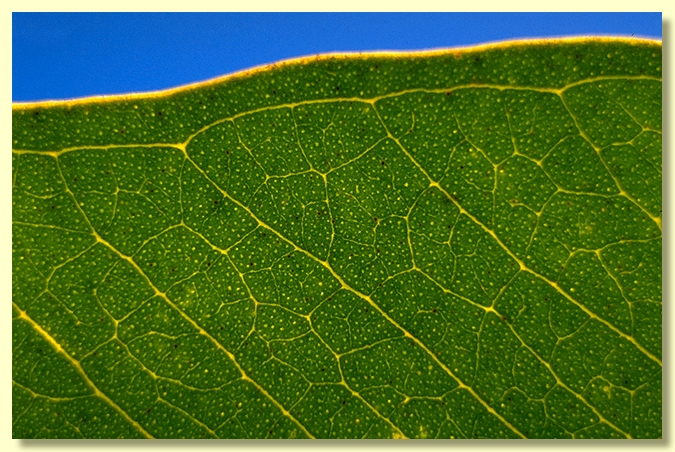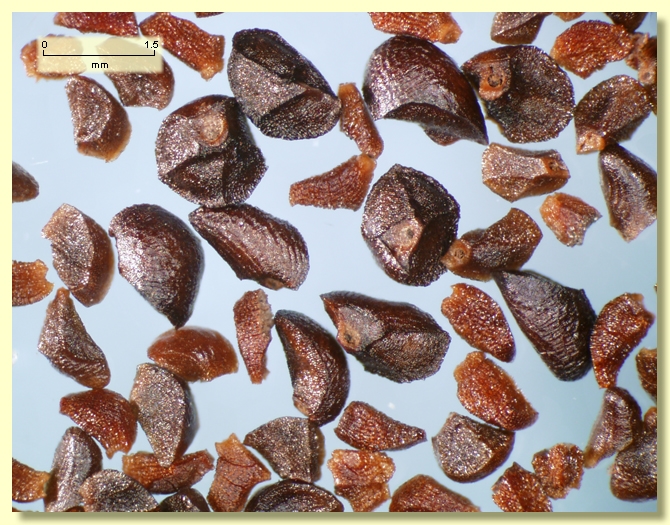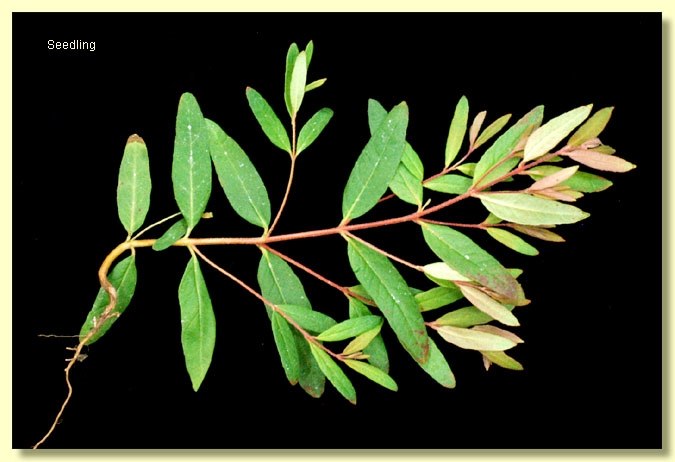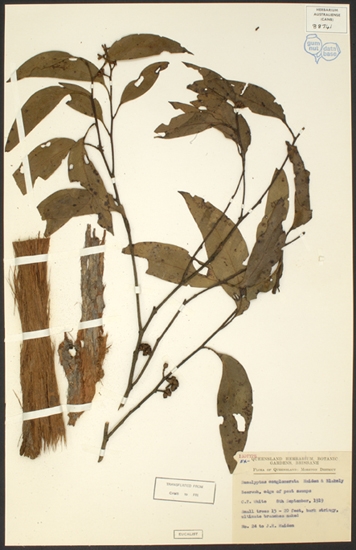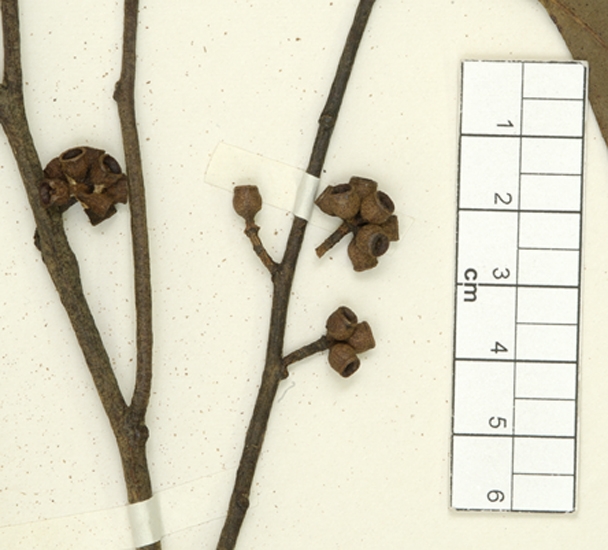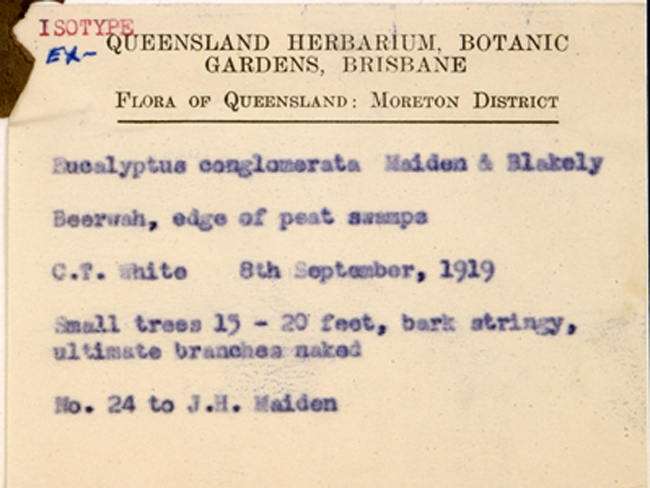Euclid - Online edition
Eucalyptus conglomerata
Eucalyptus | Eucalyptus | Capillulus | Pachyphloius
Straggly tree to 8 m tall, or sometimes a mallee. Forming a lignotuber.
Bark grey-brown stringybark to small limbs, branchlets may be smooth.
Juvenile growth (coppice or field seedlings to 50 cm): stem rounded in cross-section, scabrid with dense stellate hairs; juvenile leaves always shortly petiolate, opposite for 1 or 2 pairs then predominantly alternate, narrowly elliptical to narrowly ovate-lanceolate, 1.8–4.2(6) cm long, 0.4–1.5 cm wide, base rounded or tapering, discolorous, glossy above, green, stellate hairs conspicuous on upper and lower surface; coppice growth is hairy or scabrid until ca 50 cm tall then smooth.
Adult leaves alternate, petiole 0.7–1.8 cm long; lanceolate to elliptic-oblong, (5.7)7–13.7 cm long, 1.4–3.5 cm wide, base oblique or tapering to petiole, margin entire, apex pointed, concolorous, glossy, green, thick-textured, side-veins usually acute, sparsely reticulate, intramarginal vein well removed from margin, oil glands island.
Inflorescence axillary unbranched, peduncles 0.3–1 cm long, buds in umbels of 11 to 15 or more, sessile or pedicellate (pedicels 0–0.3 cm long). Mature buds ovoid to fusiform (to 0.4–0.5 cm long, 0.3 cm wide), smooth, scar absent, operculum conical or sometimes rounded and apiculate, stamens irregularly flexed, anthers reniform to cordate, versatile, dorsifixed, dehiscing by confluent slits, style long and bent to fit in floral cavity, stigma ± tapered, locules 3(4), the placentae each with 2 vertical ovule rows; flowers white.
Fruit sessile or shortly pedicellate (pedicels to 0.2 cm), truncate-globose or barrel-shaped, sometimes hemispherical, 0.2–0.5 cm long, 0.4–0.7 cm wide, clustered together, disc raised-annular or disc level or descending, valves 3(4), near rim level or enclosed.
Seeds blackish or dark brown, 1–2 mm long, pyramidal or obliquely pyramidal, dorsal surface smooth, hilum terminal.
Cultivated seedlings (measured at ca node 10): cotyledons reniform, green; stems rounded in cross-section, densely stellate-hairy throughout; leaves shortly petiolate, opposite for 6–11 nodes then sub-opposite to alternate, narrowly elliptical-oblong to narrowly ovate-lanceolate, 2.8–5 cm long, 0.6–1.5 cm wide, base tapering, apex pointed, glossy green above, paler beneath, very densely stellate-hairy.
Flowering has been recorded in April, May, June and August.
A small tree or mallee endemic to the Sunshine Coast area of Queensland, from Beerwah north to Kin Kin. Eucalyptus conglomerata occurs on damp sandy soil in depressions, on creek-banks or swampy ground, often at the edges of wallum or heath. Within its restricted area of occurrence it is easily distinguished by the combination of habitat, straggly habit, stringy bark to the small branches, glossy green crown of concolorous leaves with sparse reticulation, axillary clusters of numerous, small, ovoid-fusiform buds, tight clusters of small fruit and conspicuously hairy coppice growth.
E. conglomerata is most likely to be confused with other rough, fibrous-barked species, viz. E. latisinensis and E. robusta, which also favour damp sub-coastal sands. E. latisinensis differs in having adult leaves with densely reticulate venation, ovoid buds with pedicels 0.3–0.5 cm long (0–0.2 cm in E. conglomerata), and coppice growth with much larger, glabrous leaves. E. robusta has larger more pyriform buds, often beaked, occurring in clusters on flattened peduncles up to 3 cm long, cylindrical fruit to 1.1 cm wide and with valves that remain joined across the orifice after seed is shed (very unusual in Eucalyptus), and crown leaves that are darker on upper surface and paler below. On drier sandy soils another true stringybark species is found, E. tindaliae, which differs from E. conglomerata in having much larger fruit 0.6–1 cm wide.
Eucalyptus conglomerata is listed as "Endangered" under the Australian Government Environment Protection and Biodiversity Conservation Act 1999 (EPBC Act). Further information may be found at this web address:
http://www.environment.gov.au/cgi-bin/sprat/public/sprat.pl
MORE ABOUT STRINGYBARKS
Eucalyptus conglomerata: Latin con-, derived from cum, meaning together, and glomeratus, form into a ball, referring to the cluster of fruits.

